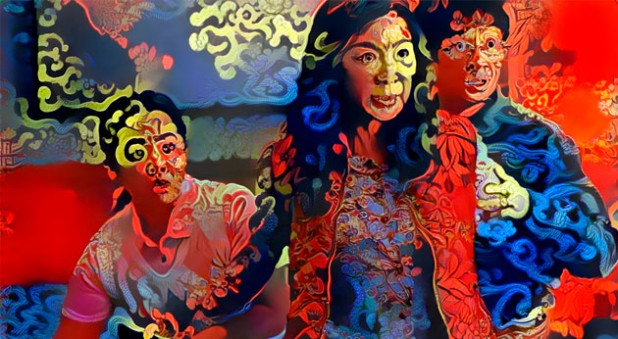Have you seen Everything Everywhere All at Once? It’s somewhat hard to describe.
It begins normally enough with a struggling migrant family, dealing with the stress of an overseas visitor and a tax office audit. But then, almost out of nowhere, it morphs into a hybrid science-fiction, action, comedy movie involving multiverses, martial arts involving bumbags and a universe where people’s fingers have been replaced by hot dogs.
It might not be your cup of tea but I thoroughly enjoyed it and it got me thinking, have I seen this movie before?
Obviously, I’ve never seen any movie like it. It is quite unique. But there were themes that seemed very familiar, especially when it comes to movies featuring Asian people.
And I don’t know if you’ve come across the idea of “representation”? It’s basically about how the media, such as books or movies, represents the diversity of people in the community.
An example of this was in the news the other day. One of the co-creators of the TV show Friends, Marta Kauffman, pledged US$4million for an endowed professorship in African and African American studies at her old university, having recognised the under-representation of non-white characters in her show.
Why is the idea of representation important?
It’s important in terms of the way that certain groups are represented. For example, 59 per cent of videos containing Asian people on YouTube include stereotypes such as them being work-oriented, socially awkward and tech-savvy. But representation can also be important in terms of the way people see themselves. While the movie Black Panther was a worldwide hit, it also allowed a generation of Black children to see someone who looked like them as a superhero.
59 per cent of videos containing Asian people on YouTube include stereotypes
And what’s been true of the Black community has been true for the Asian community as well.
While there’s been a growth in the presence of Asian culture in the West – think Parasite, Squid Game, BTS and the ubiquity of Asian eateries – we’ve also had a spate of “Asian” movies coming out of Hollywood, from Crazy Rich Asians to Shang-Chi and The Legend of The Ten Rings and Everything Everywhere All At Once (which may not have an all-Asian cast but has a majority of Asian characters).
Representation, and yet…
This is all fantastic in terms of representation. It’s nice for Asian people not to be relegated to just being minor characters – when I was growing up the only Asians I ever saw on TV were gangsters, waiters or martial artists.
But can I just say there’s still some way to go when it comes to the diversity of stories that come from Asian people. Because while the three movies I mentioned have been wonderful to see, as I said before they are all somewhat the same.
What’s the plot of Crazy Rich Asians? (spoiler alert!) It’s about a young Asian couple who want to get married, but the young man comes from a wealthy family and his mother disapproves.
What’s the plot of Shang Chi and the Legend of the Ten Rings? (spoiler alert!) It’s about a young man whose father is the wielder of the mystical 10 rings, who has been trained as an assassin but has run away to be a parking valet.
What’s the plot of Everything Everywhere All At Once? (big spoiler alert!) It’s about a woman who is the worst possible version of herself, and is the only one who can defeat a traumatised version of her daughter – who has created a device that can destroy the whole universe.
Three different movies. Three different plots. But all three narratives are driven by parent-child relationships, in particular the tension between wanting to please one’s parents and expressing oneself as an individual, within the context of Confucian filial piety colliding with Western individualism.
I realise that’s a mouthful, but I hope you get what I mean? It’s all about the struggle for identity and acceptance in a culture that thinks collectively. Where the needs of the many outweigh the needs of the few (quoting Spock!). Where “we” is bigger than “I” and duty and connection are all-powerful.
The faith and ministry context
Now understanding this can be very helpful, especially in this “Asian century” and with God bringing so many Asian people to live in Australia.
It can help us with mission, knowing we’re not just trying to persuade people but we’re also asking them to put Jesus before their families.
We’re not just trying to persuade people but we’re also asking them to put Jesus before their families.
It can help us pastorally, especially when people make decisions that seem puzzling, where they follow the advice of their families rather than what we find in the Scriptures. It can also help us with marriage preparation, reinforcing the need to “leave and cleave” (Genesis 2:24), and it’s also a major factor when it comes to encouraging people to get baptised or to even enter ministry – because to do so is to cross a line that betrays one’s loyalty to one’s family.
There are many ways that understanding this can help us to serve, and to reach, the many Asian people that God is bringing to our cities.
But despite the common themes that we find in movies about Asians, which are grounded in the realities of real-life people, representation does teach us that not all Asians are the same. You’ll know that if you meet some and listen to their stories, which may be even more interesting than Everything Everywhere All At Once!














